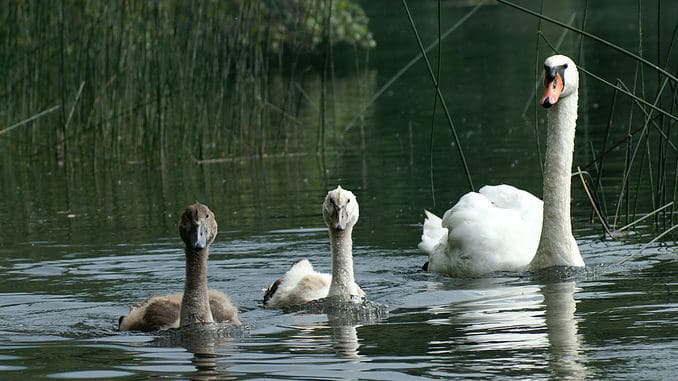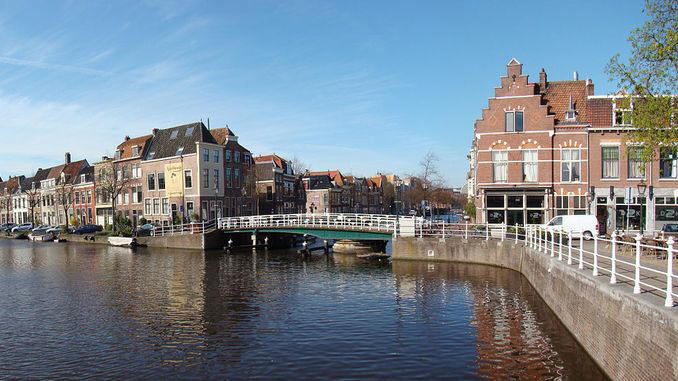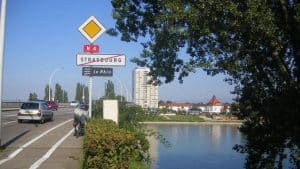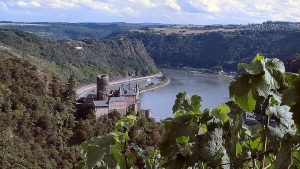
Our region is located on the northern border of the Middle Rhine Valley. When we hike through the hills and valleys of the Siebengebirge and look down on our small part of the Rhine, he has already come a long way from the Swiss Alpes to the Northern Sea, through Liechtenstein, Austria, France and the German Länder Baden-Württemberg, Hesse and Rhineland-Palatinate.
Alpine Rhine
The Rhine has his sources in Switzerland. Here we have the Vorderrhein (Anterior Rhine) and the Hinterrhein (Posterior Rhine). They meet close to Reichenau and form the Alpine Rhine. This section between the Swiss canton of Graubünden and Lake Constance is the Alpine Rhine. It later forms the border between Switzerland and Liechtenstein, and then the Austrian federal state Vorarlberg.
Alter Rhein (Old Rhine)
When the Rhine was straightened during the 20th century, parts of his old river bed around St. Gallen in Switzerland and Vorarlberg in Austria, were cut off. Today, these cut-off arms are nature reserves.
Lake Constance

The Alpine Rhine flows into Lake Constance on Austrian territory. Three countries meet here: Austria, Switzerland, and the German state Baden-Württemberg. Lake Constance consists of the Obersee (upper lake) and the Untersee (lower lake), which has Germany on the northern bank and Switzerland on the southern. The small Rhine section called Seerhein (Lake Rhine) connects both lakes.

High Rhine
From Lake Untersee, the Rhine passes the Swiss city Stein am Rhein, here he emerges from Lake Constance and is from now on called Hochrhein (High Rhine). He flows west through the Swiss canton Schaffhausen and reaches the Rhine Falls, and then continues to Basel. Here, in the center of Basel, he changes his direction from west to north, that is the “Rhine knee”. From now on, he is the Upper Rhine.
Upper Rhine
The river now flows north through the Upper Rhine Plain. The southern half of the Upper Rhine has France on his left and Germany on his right bank. The northern half forms the border between the German states Rhineland-Palatinate on the left bank and Baden-Württemberg and Hesse on the other bank. The Upper Rhine region was changed significantly by the Rhine straightening programs in the 19th century.
Middle Rhine
Between Bingen in Rhineland-Palatinate and Bonn in North Rhine-Westphalia, the Rhine flows as the Middle Rhine through the Rhine Gorge. For many people, the narrow valley with its steeps, vineyards and numerous castles is the classical Rhine landscape par excellence. In other words, the epitome of the “Romantic Rhine”. This applies especially to the Upper Middle Rhine Valley between Bingen and Koblenz, which is since 2002 a UNESCO World Heritage Site. The Rhine meets the Siebengebirge at the northern border of the Middle Rhine Valley, this is at the southern border of North Rhine-Westphalia.
Lower Rhine
Behind Bonn, where river Sieg flows into river Rhine, the Lower Rhine begins. The Rhine flows along major cities, Cologne, Düsseldorf and Duisburg, where we have Europe’s largest inland port. Then he flows through the North German Plain and eventually in a wide curve through the Netherlands.
Netherlands

Here, the Rhine divides into the Waal, the Lek and the IJssel. Finally, the waters of the Rhine arrive at the Rhine-Meuse-Scheldt delta and flow into the Northern Sea.
When we speak of “Father Rhine”, it also means that we have a lot of relations in all these regions. Moreover, our ancestry is motley. During the last 2,000 years, time and again people from various countries came to our region, so we Rhinelanders are mixtures by birth. I’m proud of it.
References
The following photos are from the German Wikipedia.
The photo of the swan family seen at Hohenems, Austria, Höckerschwanfamilie, is licensed under the Creative Commons Attribution-Share Alike 2.5 Generic Lizenz. Attribution author Böhringer Friedrich.
Abendbeleuchtung des Kölner Doms, evening in Cologne, cropped. This file is licensed under the Creative Commons Attribution-Share Alike 4.0 International license. Attribution author Adrian Eißler, www.wallpapersmartphone.de
Katz castle above Sankt Goarshausen and the river Rhine with Loreley rock in background. This file is licensed under the Creative Commons Attribution-Share Alike 3.0 Unported license. Author: King (Felix Koenig)
The following photos are published under the GNU Free Documentation License, Version 1.2 or any later version published by the Free Software Foundation; with no Invariant Sections, no Front-Cover Texts, and no Back-Cover Texts.
- Strasbourg, Bridge over the Rhine, Szeder László
- Konstanz, old Rhine bridge, attribution author Achim.
- Alpine Rhine, view from Triesenberg in Liechtenstein, attribution author Neptuul
- Burg Pfalzgrafenstein nearby Kaub, attribution author Holger Weinandt
Public Domain Section
- Reichenau, Confluence of Vorderrhein and Hinterrhein, attribution authorAlbinfo
- Rhine Falls, near Schaffhausen, Switzerland, attribution authorEarth explorer
- Rohrschollen Island, attribution author Paralacre
- Panoramics of Leiden, attribution author Arch









Be the first to comment